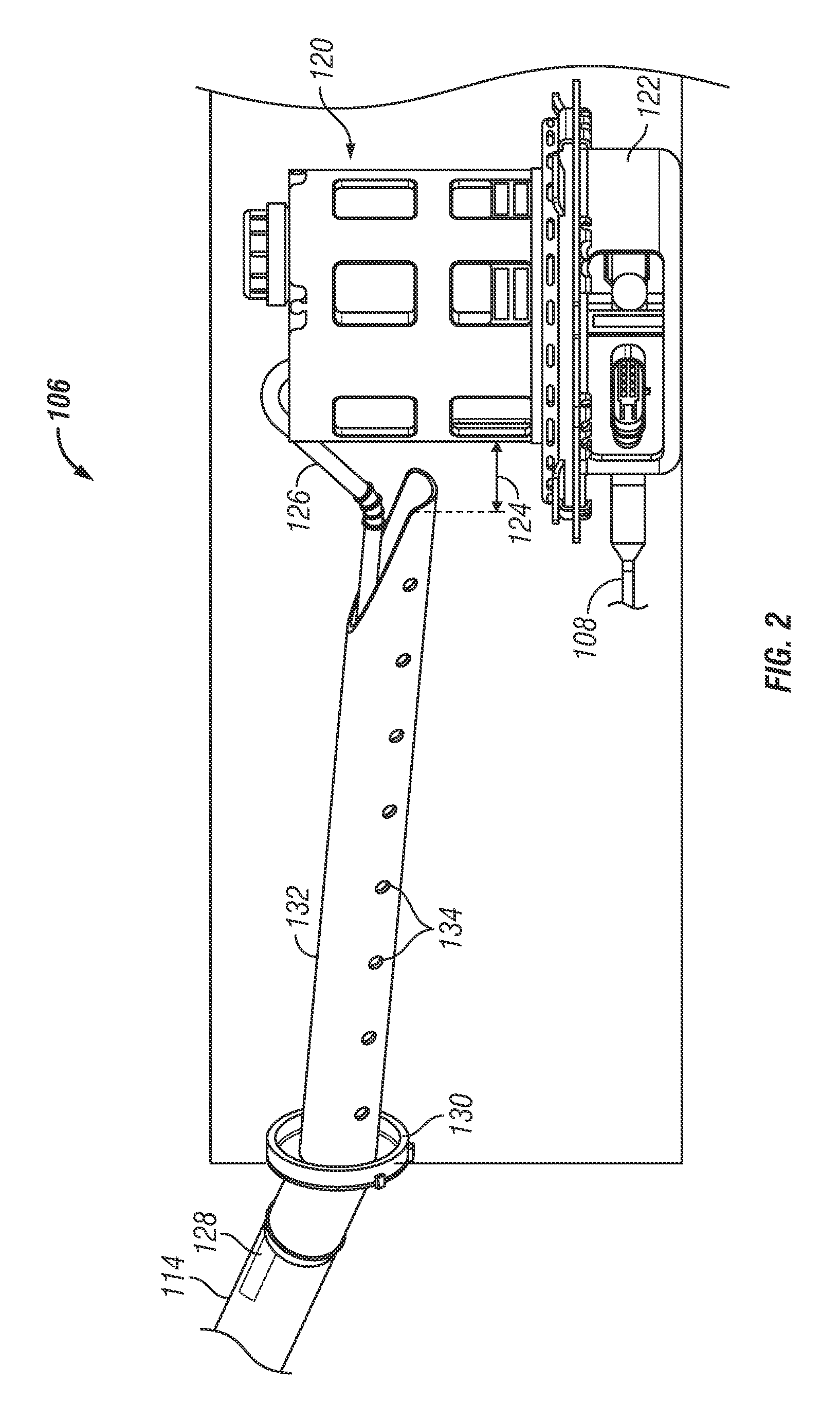Emission control system for a vehicle
a technology of emission control system and vehicle, which is applied in the direction of machine/engine, water supply installation, pipe heating/cooling, etc., can solve the problems of affecting the proper inhibiting or preventing the refilling of the reservoir, and affecting the operation of the scr system
- Summary
- Abstract
- Description
- Claims
- Application Information
AI Technical Summary
Benefits of technology
Problems solved by technology
Method used
Image
Examples
Embodiment Construction
[0011]The following detailed description is merely exemplary in nature and is not intended to limit the subject matter of the disclosure or its uses. Furthermore, there is no intention to be bound by any expressed or implied theory presented in the preceding technical field, background, brief summary or the following detailed description.
[0012]The following description refers to elements or features being “connected” or “coupled” together. As used herein, “connected” may refer to one element / feature being directly joined to (or directly communicating with) another element / feature, and not necessarily mechanically. Likewise, “coupled” may refer to one element / feature being directly or indirectly joined to (or directly or indirectly communicating with) another element / feature, and not necessarily mechanically. However, it should be understood that, although two elements may be described below, in one embodiment, as being “connected,” in alternative embodiments similar elements may be ...
PUM
 Login to View More
Login to View More Abstract
Description
Claims
Application Information
 Login to View More
Login to View More - R&D
- Intellectual Property
- Life Sciences
- Materials
- Tech Scout
- Unparalleled Data Quality
- Higher Quality Content
- 60% Fewer Hallucinations
Browse by: Latest US Patents, China's latest patents, Technical Efficacy Thesaurus, Application Domain, Technology Topic, Popular Technical Reports.
© 2025 PatSnap. All rights reserved.Legal|Privacy policy|Modern Slavery Act Transparency Statement|Sitemap|About US| Contact US: help@patsnap.com



